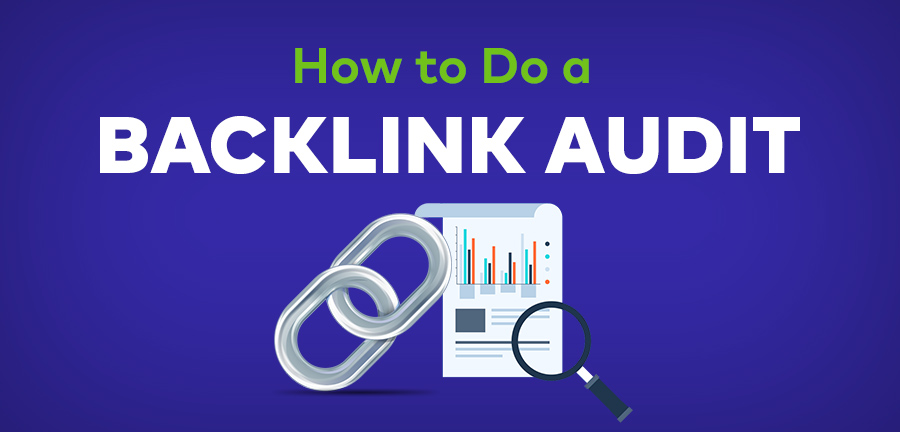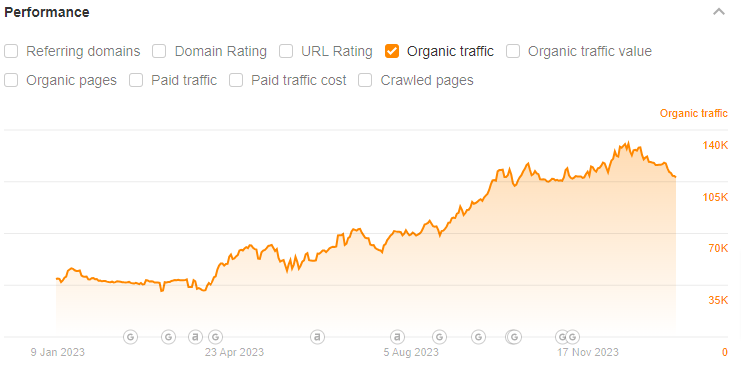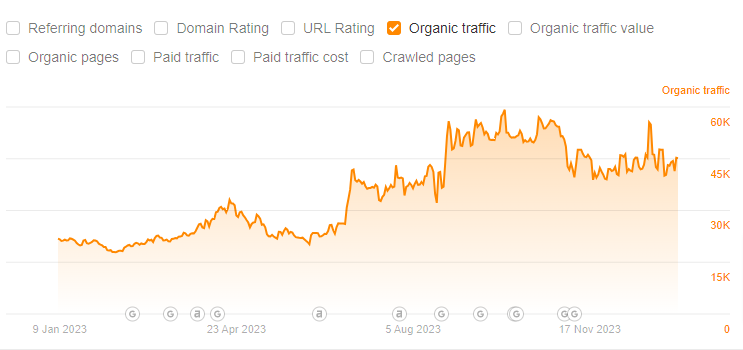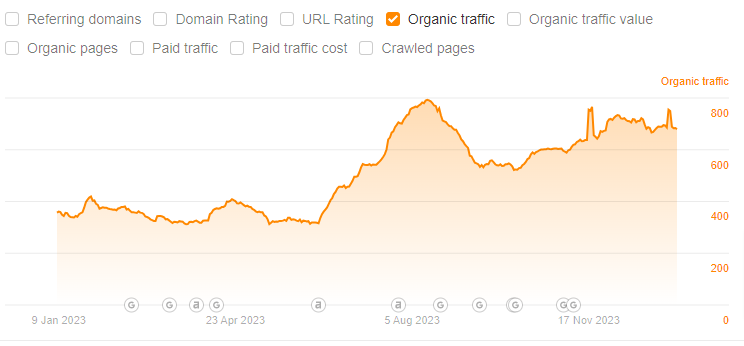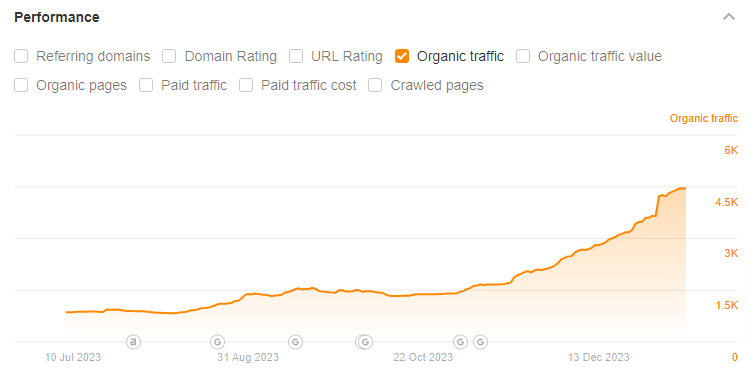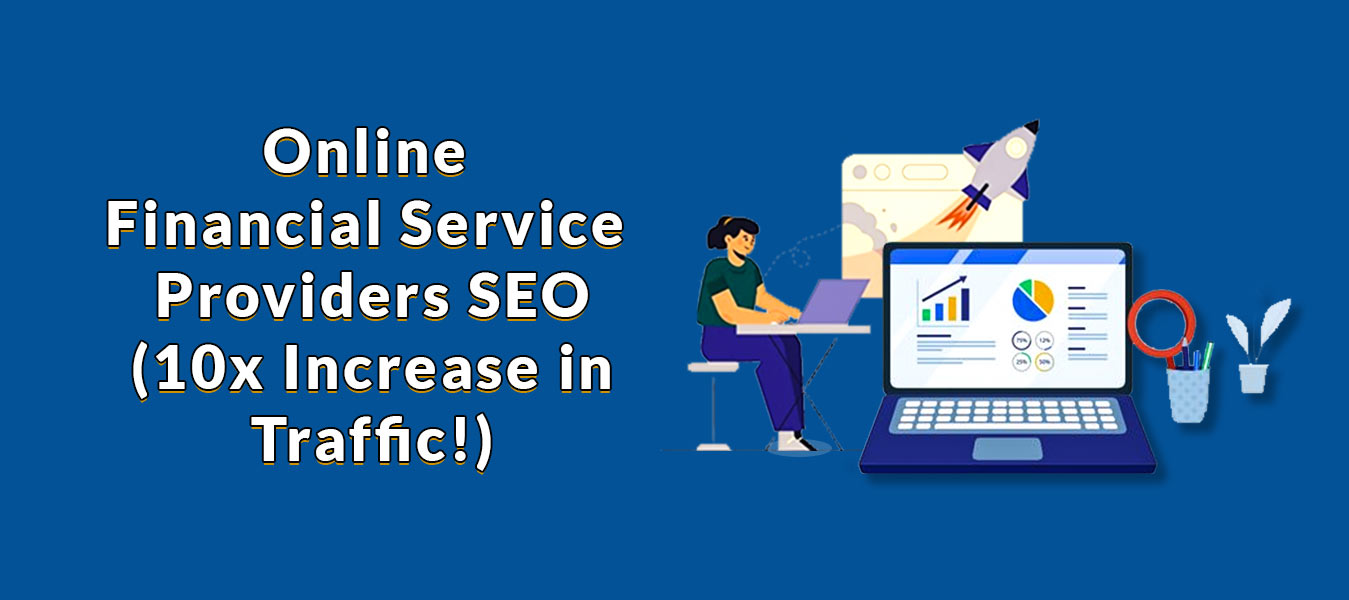A backlink audit is an effective way to measure SEO performance.
It allows you to evaluate your website health and ensure you remain in Google’s good books. Thus, an effective backlink audit helps you optimize your website properly. More importantly, you get to avoid the drawbacks of black hat SEO.
In case you don’t know how to audit links for SEO, stay put – we have a detailed guide on manual backlink audit and how to do it right.
A backlink audit is the very first thing to do when you start working on a new website. So, SEO professionals must be aware of standard backlink audit techniques.
If you are a newbie, let’s get yourself familiar with some basic terms first.
What Is A Backlink Audit?
A backlink audit is a process in which we evaluate external links. Simply put. This is an assessment of links that point to your website from other websites. You need to audit all the links and separate the good links from the bad ones. The procedure involves evaluating all the backlinks manually.
How Long Does A Backlink Audit Take?
An effective backlink audit may take from 4 to 10 minutes. This is if you are using the best backlink audit tools. The audit time for backlinks may vary depending on website age and the number of links. However, a comprehensive link audit will take more time as it requires manual efforts.
In short, you’ll get a backlink audit report in less than 10 minutes. But the evaluation process may take 30 to 50 minutes.
What Is A Backlink Profile?
A backlink profile is a comprehensive report on external links. It represents the number of total links that are directed towards your website. In addition, it brings to light the other characteristics of backlinks.
The backlink audit checklist includes:
- Types of links (Do-follow or No-follow)
- Domain Authority
- Anchor texts (Words that contain hyperlinks)
- Frequency of anchor texts
- Link Quality (good or toxic)
What Is A Quality Backlink?
A quality backlink is one that comes from an authoritative website. These are highly relevant sites within the same niche or industry that have high traffic and domain authority (DA). Quality backlinks are do-follow links that are placed inside the content contextually. Ideally, a quality link is positioned on a site or page that talks about the same subject.
What Is A Toxic Backlink?
A toxic backlink is one that is placed on an irrelevant website. These are unnatural links that signal search engines that you are using black hat SEO practices. That’s because toxic backlinks often come from low-quality or spammy websites.
Toxic backlinks are a hint that you are manipulating search engines to get higher rankings. Having such links on your website can hurt your websites’ SEO.
Why Do You Need To Perform Regular Backlink Audits?
The importance of an effective backlink audit cannot be overlooked from an SEO perspective. For starters, this is an opportunity to check the overall backlinks and identify the toxic links. You get the opportunity to do a toxic backlink audit and disavow or remove harmful links.
Regular backlink audits help prevent you from any possible penalties by Google. You get to remove broken links and can find opportunities for premium link building. This is why you must perform regular backlink audits as a webmaster. It is better to do a manual backlink audit after six months.
How to Check Backlinks of Website?
A link building audit can be divided into two separate processes for ease. The first one is a link profile audit that presents a detailed picture of total links. You get to separate do-follow and no-follow links and referring domains based on their DAs.
The link profile analysis refers to a deep audit of backlinks. This includes reviewing the hypertexts that contain your website links. In addition, you must look for the link quality, number of unique domains, and page authority factor.
you can download the list of all your backlinks from Google Search Console.
How to Do Backlink Audit – Step By Step
A backlink inspection is easy if you know how to do SEO link audit. A backlink audit involves evaluating external links to ensure you are following white hat SEO practices.
If you are following premium backlinks building guidelines, you don’t have to worry much.
Here’s how to check backlinks of your website as a newbie.
Step 1: Choose the Best Backlink Audit Tools
The process of an effective manual backlink audit starts with choosing the right tools. There are a number of options available in the market. But we are going to talk about 3 of the best backlink audit tools.
Moz – Link Explorer
MOZ has earned the name for being one of the first Backlink audit tools. Also, having a strong backlink database of 40T links gives it an edge over other tools. The tool offers you the opportunity to:
- Assess competitor links
- Evaluate anchor text used in backlinks
- Fix broken links to your website
- Discover your lost links
- Find out new link building opportunities
Ahref Backlink Checker
This is a premium SEO tool that started as a backlink checker. Now Ahref has several free and premium SEO tools to help you rank better in search engines. Its free backlink checker allows users to check the total number of backlinks and referring domains against any URL.
However, the premium Ahref backlink checker comes with pro features. It allows you to:
- Monitor backlink profiles
- Discover top linked pages
- Check domain authority of referral websites
- Discover lost or new backlinks
SEMrush Backlink Analytics
The keyword planning tool has established a massive backlinks database over the years. The tool claims to have 43T backlinks in its arsenal. You can do a comprehensive backlink audit to:
- Perform bulk analysis (multiple websites at once)
- Discover anchor text usage
- Review authority of referral domain
- Explore where backlinks come from (geographically)
Step 2: Remember Backlink Audit Tips
Don’t forget to evaluate the quality of backlinks during your audit. The following backlink audit tips will help you measure the value of backlinks.
Domain Authority
The first and foremost thing to notice during backlink audit is domain strength. Each tool uses different terminology to define how valuable a domain is. Moz uses the term “domain authority” while Ahref and SEMrush use “domain rating” and “Authority score” respectively.
Nonetheless, all these backlink audit tools allocate numeric values to domains. Depending on their own quality of backlinks, they are given a rating. This tells how good the specific domain is and whether it’s valuable to get a link from it.
Domain Relevance
A backlink from a higher-quality website is surely worth it. However, there is more to it than meets the eye. You must also consider topic authority and location relevance to determine the true value of backlinks.
For example, if you are a wildlife photographer, a backlink from National Geographic or World Wide Fund for Nature (WWF) is good from an SEO perspective. This will hint to search engines that you are an authority on the subject or topic.
Backlinks from local websites are more valuable if your business is country-specific. For example, if you run a can business in the UK, links from local traveling blogs will be more useful. This will signify your authority to search engines as a local business in the region.
Anchor Text Relevancy
Links can be listed as URLs, but it is better when they are attached to words. However, it is more valuable when your link is attached to relevant words (anchor texts). Let’s understand it with an example.
Which of the following backlinks would be the most valuable for Globex Outreach?
- Learn more about the best SEO link building agency here: https://www.globexoutreach.com/
- Learn more about the best SEO link building agency here.
- Learn more about the best SEO link building agency.
From these three, the third backlink is the ideal anchor text.
The first backlink does not have an anchor text. It is listed as a simple URL and thus offers less value. The second backlink is placed with the anchor text “here.” However, this text is neither informative nor relevant to our business.
The number three is an ideal backlink as it comes with relevant anchor text. It is informative for readers and search engines in terms of relevancy. So, not only it’ll generate leads but will also inform search engines to rank us against the relevant term.
On Page Location
The location of backlinks also plays a vital role in link juice transfer. Backlinks present in the content offer more authority than the ones that are located in the footer. Similarly, search engines consider backlinks more valuable when they are present on top of the content body. As referenced by MOZ:
Backlink Diversity
The uniqueness of links is another key factor to evaluate backlinks. A backlink from a new domain is more valuable than a second backlink from a domain. Although having multiple links from the same domain is good, they are of less value. Also, you must not try to get multiple backlinks from the same page.
Step 3: Follow Backlink Profile Audit Techniques
You now know how important it is to have a regular backlink audit. Now, let’s explore the best backlink profile audit techniques.
Get a Comprehensive List of Backlinks
You cannot perform a backlink audit of your website without having a complete list. We find SEO SpyGlass a more suitable tool to collect all the backlinks in one place. This is one of the best backlink audit tools to get a clear picture of your backlinks.
You can also pull backlinks data from Google Analytics and Google Search Console. The next step to take is validating backlinks that point to your website.
Evaluate Your Backlink Profile
A backlink profile is a collection of individual links and domains. However, a quick assessment can help you understand how backlinks are performing together.
- Compare the total number of backlinks
- Evaluate the do-follow vs no-follow ratio
- Assess the number of unique domains
- Consider link profile growth over time
- How many backlinks are from homepages
- Analyze backlinks according to country
- Assess top anchor texts
- Check top-linked pages
Identify Potentially Dangerous Backlinks
The sole purpose of an effective backlink audit is to ensure the quality of backlinks. Identifying spammy and potentially risky links is the key here. You can get help from SEO tools to detect backlinks that might affect your website’s SEO. This way you can quickly know the overall toxic score of your website.
The next phase is to check them manually and remove or disavow them. You can also decide whether to remove or keep the link depending on the risk value of a backlink.
Evaluate Suspicious Backlinks Manually
A manual backlink audit is a good way to assess suspicious links. This will help you clean up your backlink portfolio without removing too many links at once. An easy way to do so is to check how much traffic that specific backlink is generating.
After that, review the domain authority and see whether the link is coming from a relevant website. Also, make sure the link is placed with a relevant anchor text. As an extra layer of protection, you can also verify link placement. Check whether the lick is placed in the content of the footer.
Step 4: Conduct Backlink Analysis
A backlink analysis allows you to evaluate your competitors’ websites. You can find their strengths and weaknesses to formulate your link building strategy accordingly.
How to Conduct Backlink Analysis
A detailed backlink analysis benefits in a number of ways. You get to evaluate backlinks’ quality and the ability of your website to rank higher.
Here’s how to conduct backlink analysis quickly.
Select Websites You Want To Analyze
Backlink analysis starts with choosing the competitors that you want to outrank. This can be a local business offering the same services or an online store selling the same products. You can also explore your competitors by analyzing your website with the best backlink audit tools.
Pick Your Favorite Backlink Analysis Tool
We have already talked about the best SEO tools for a backlink audit. The three of the top backlink analysis tools are:
- MOZ Link Explorer
- Ahref
- SEMrush
Each tool has its own benefits and offers unique features. You can pick any tool to do a regular backlink audit. However, if you are doing a comprehensive evaluation, it’s better to read the comparison first.
Collect Desired Information
Once you have chosen domains for backlink analysis, it is time to collect data. This involves sifting through information and looking for valuable stats. Deepening on your backlink audit needs, the required information may vary. So, you must decide earlier what type of information you are looking for.
What should you look for in a backlink analysis?
Conducting backlink analysis of one or more competitor websites is a time-consuming job. It offers detailed information that you can use to get higher rankings.
However, a backlink analysis can divert your efforts from actual SEO work to competitor investigation. So, instead of diving deep into the analysis, you should look for only key value points.
To get the most out of backlink analysis, we advise you must look into the below information.
Total Number of Links
An easy way to assess website authority is the total number of backlinks. This is one of the basic metrics that tell how strong your backlink profile is. However, the number of backlinks does not reflect the quality of links. You must aim to get a more diverse link profile than your competitors.
Unique Referring Domains
The number of unique domains referring back to your website is crucial. Normally, you will have less number of domains than your total number of backlinks. But you must look for relevant domains that are referring to your competitors’ websites.
This will provide you with potential link opportunities that your website is missing. Since your competitor is getting links from them, it’ll be easy for you to get one. So, you must try to get backlinks from these domains.
Top Pages
Another key factor to look for is the top pages that are getting backlinks. This allows you to see which pages of a website (yours or competitors) are performing well. You can get ideas and develop content clusters revolving around the same ideas to outrank competitors.
You can utilize these topic ideas and incorporate them into link-building strategies. Plus, this will allow you to offer something unique to baggers and get backlinks in return.
How to Do a Toxic Backlink Audit
A toxic backlink audit is part of the backlink evaluation process. The entire audit relies heavily on spotting and removing toxic backlinks.
How to Spot Toxic Backlinks
The main difference between a good or toxic backlink is the quality. You can easily spot toxic backlinks by evaluating them against basic parameters. This involves assessing the relevance of the topic, country, age of the website, and other metrics. You can also spot harmful backlinks if links are coming from:
- Comments section
- New websites or PBNs
How to Disavow or Remove Harmful Links
Once you have separated toxic backlinks, it’s time to get rid of them. There are two ways to do so and you either have to disavow or remove harmful links.
- Asking the referring websites to remove links
- Using the Google Disavow Tool
- Cleanup Backlink Portfolio
How to Remove Toxic Backlinks
Once you have spotted the toxic backlinks, now is the time to remove them. There are a few ways to get rid of harmful links to avoid the potential Google penalties.
Contact the Website Owner
The easiest way to remove a toxic backlink is by asking the website owner to do so. The trick here is to outreach them and request politely. The method often works as we have tried them several times. In case you don’t know who owns a website, you can check the ownership at Who.is.
However, some webmasters may ask you to pay them for removing the links. But we recommend you must not do that or hire a bad backlink removal service.
Delete Low-Quality Pages
The next option is to delete the pages that have toxic backlinks. But you must only do so if a page has too many harmful backlinks. Never delete a content page that is of high value and is generating traffic. In such cases, disavowing bad backlinks are a good idea.
How to Disavow Toxic Backlinks with Google Tool
Another simple way to get rid of bad links is the ‘Disavow Links’ tool. If website owners are not replying to your requests or asking you to pay, this is your safe passage. All you need to do is create a list of toxic backlinks and then submit it to Google.
However, you must be cautious and re-check the list before disavowing backlinks. Make sure you are not destroying high-quality or high-traffic backlinks that can hurt your rankings.
Cleanup Backlink Portfolio
Another way to get rid of toxic links is a massive cleanup backlink portfolio. But you should only do this if:
- Your website isn’t ranking
- Your website has received a penalty
It is better to consult a bad backlink removal service before cleaning up your backlink portfolio. You must not do this on your own as it can harm your website’s overall SEO.
Conclusion – How to Do a Backlink Audit Properly
A regular backlink audit is essential if you want to ensure consistent SEO growth. You can do this within 4 to 10 minutes if you are using one of the best backlink audit tools. However, an effective backlink audit may take more time to remove toxic backlinks.
It’s easy to disavow or remove harmful links if you are following the backlink audit checklist. The standard backlink audit techniques allow you to remove toxic backlinks and provide new backlink opportunities.
In case you don’t know how to get powerful backlinks, consider hiring a service. You can buy high-quality backlinks to save time and avoid spammy links to your website.


